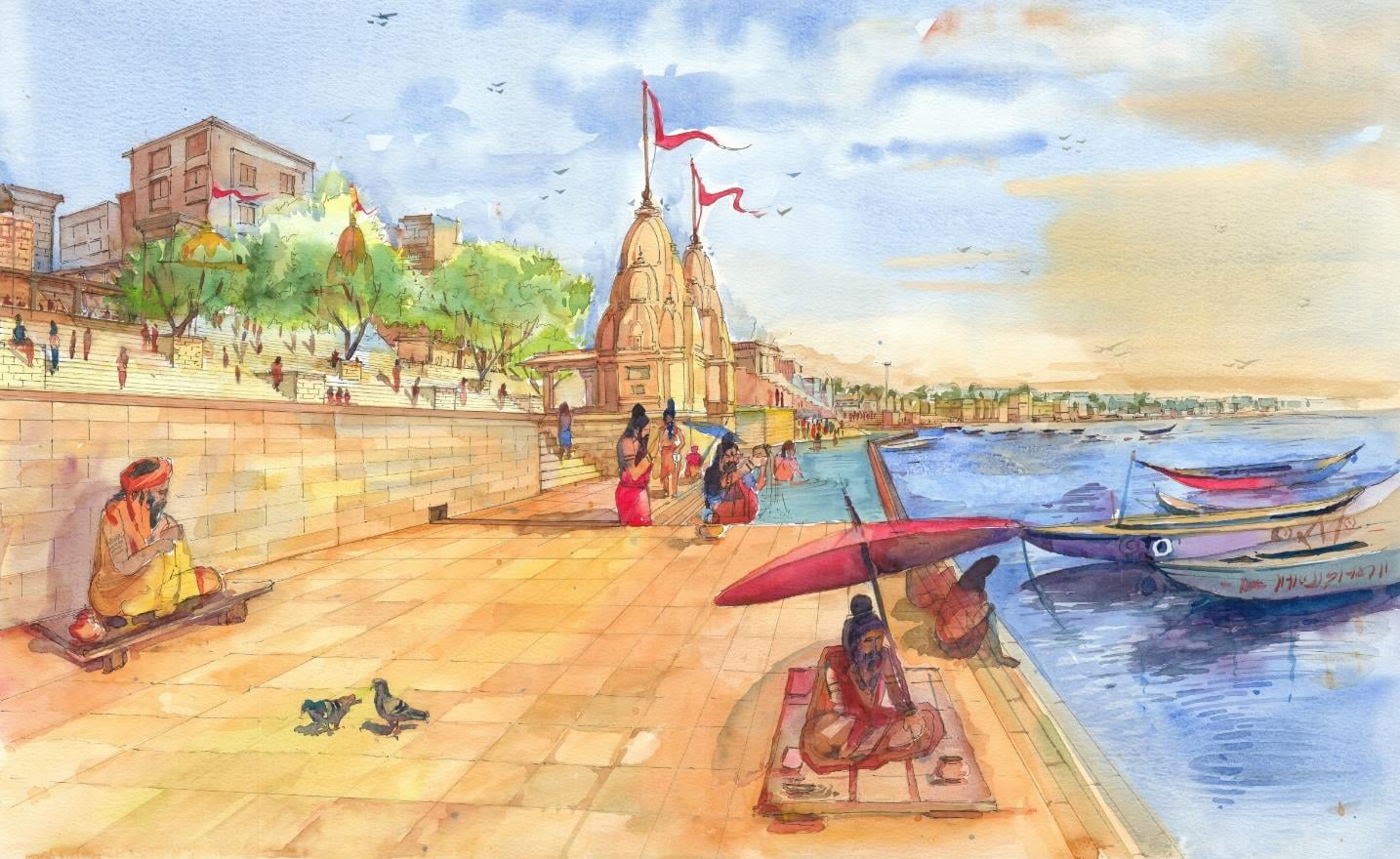
Redevelopment of Ghats on Ganga River,
Varanasi
Varanasi, Uttar Pradesh, India
Harishchandraghatis the oldest Kashi cremation ground. Significant number of cremations take place here since according to the Hindu mythology, being cremated here provides moksha, salvation. Harishchandra ghat currently faces many issues in terms of cleanliness, pollution, silt deposits, encroachments, deterioration of hardscape, unorganized wood stocks and funeral activities, missing streetscape elements, dilapidated building facades etc.
The proposal for ghat revitalization is a three step process as described below.
- Check on river pollution by controlling flow of puja samagri and sewage into the river. Kunds and basins can be created for cremation activities.
- Integration of technology in the process of cremation such that it controls pollution on the ghats.
- Redevelopment of the ghat area in terms of step cleaning, restoring hardscapes and built form around, organizing informal and formal activities, provision of streetscape elements such as street furniture, lighting etc and improvement of ghat infrastructure and amenities.
Site Area : 7 Acres (240 Meters Length Approx.)
Services : Planning - Urban Design, Architecture, Landscape Design, Conservation, Infrastructure Planning
Share ►
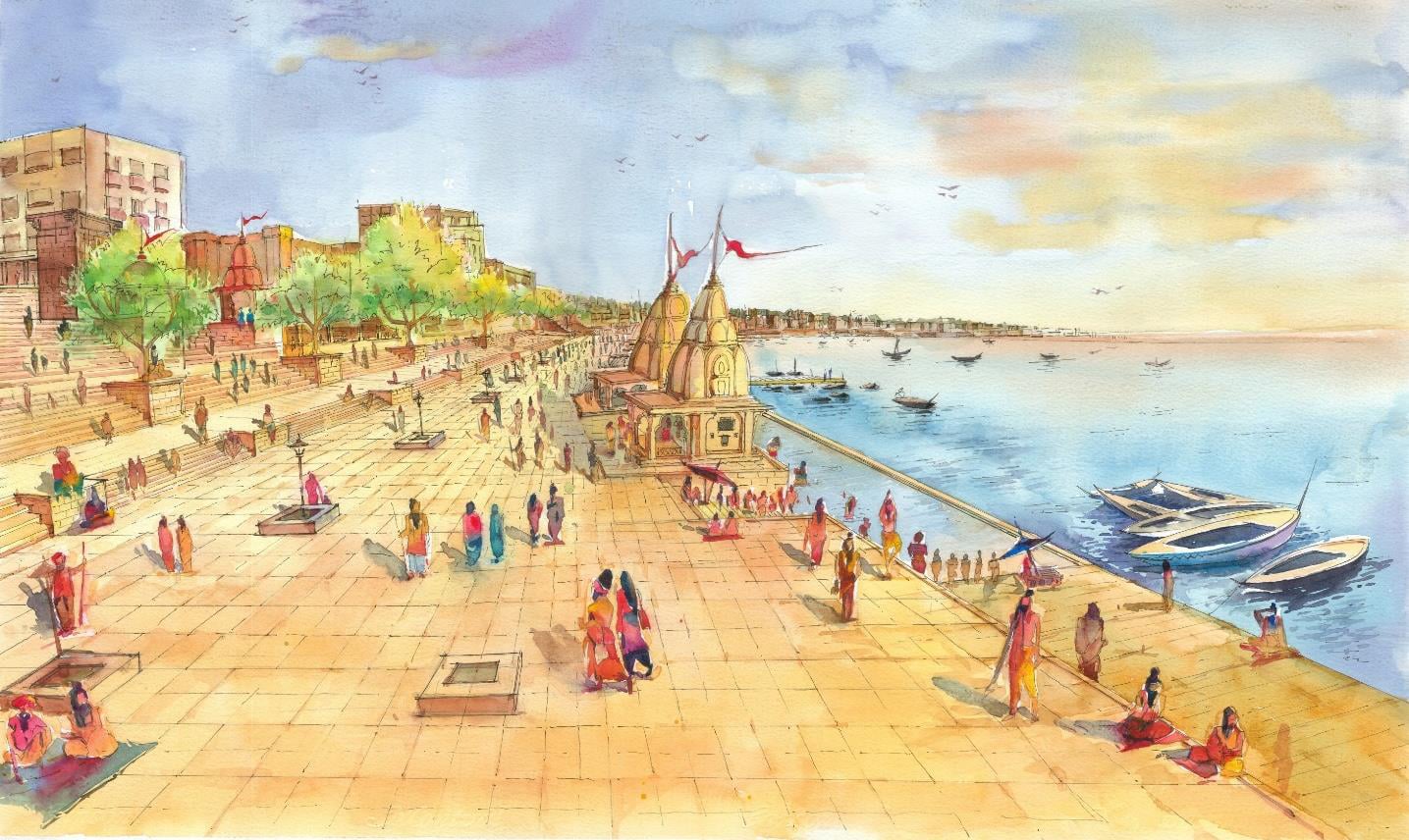
Upholding Traditional Sanctity through a Sensitive Planning Intervention
Varanasi (or Benaras or Kashi), regarded as India’s spiritual capital and located in its northern state of Uttar Pradesh, is also fabled to be one of the oldest cities in the world. Having origins historically traceable to the 11th century BC, this tradition-rich city spread out over a stretch of 7 kms along the banks of the Holy Ganga has been attracting lakhs of pilgrims to its 23000 temples, the great Kashi Vishwanath Temple being the main one. It also receives lakhs of visitors coming to perform the last rites of deceased family members at its 84 small and big Ghats built along the Ganga, of which five major and two secondary ones have been identified. Of all these, the Raja Harishchandra Ghat draws the most crowds for cremation as it is believed to ensure instant salvation or Moksha.
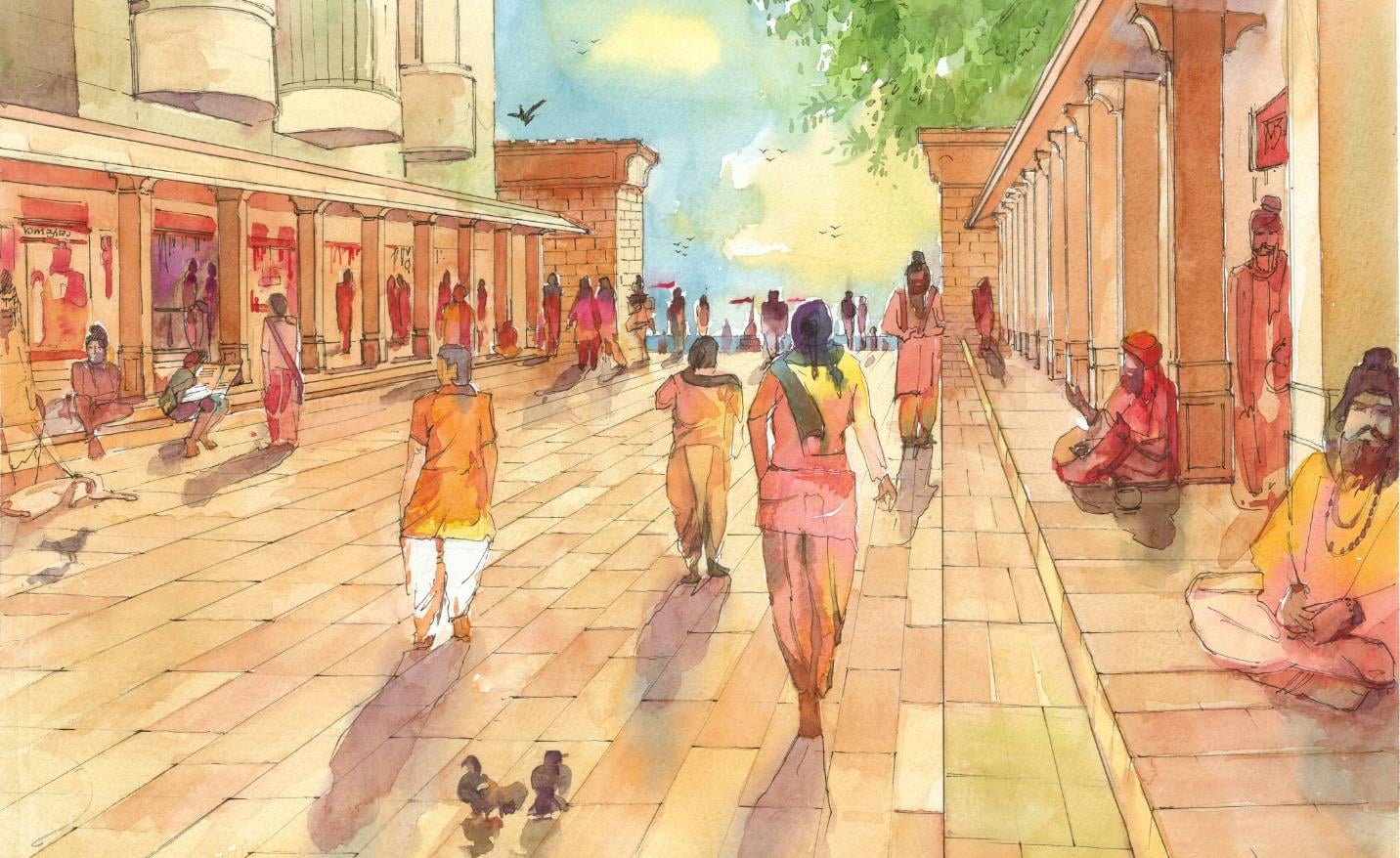
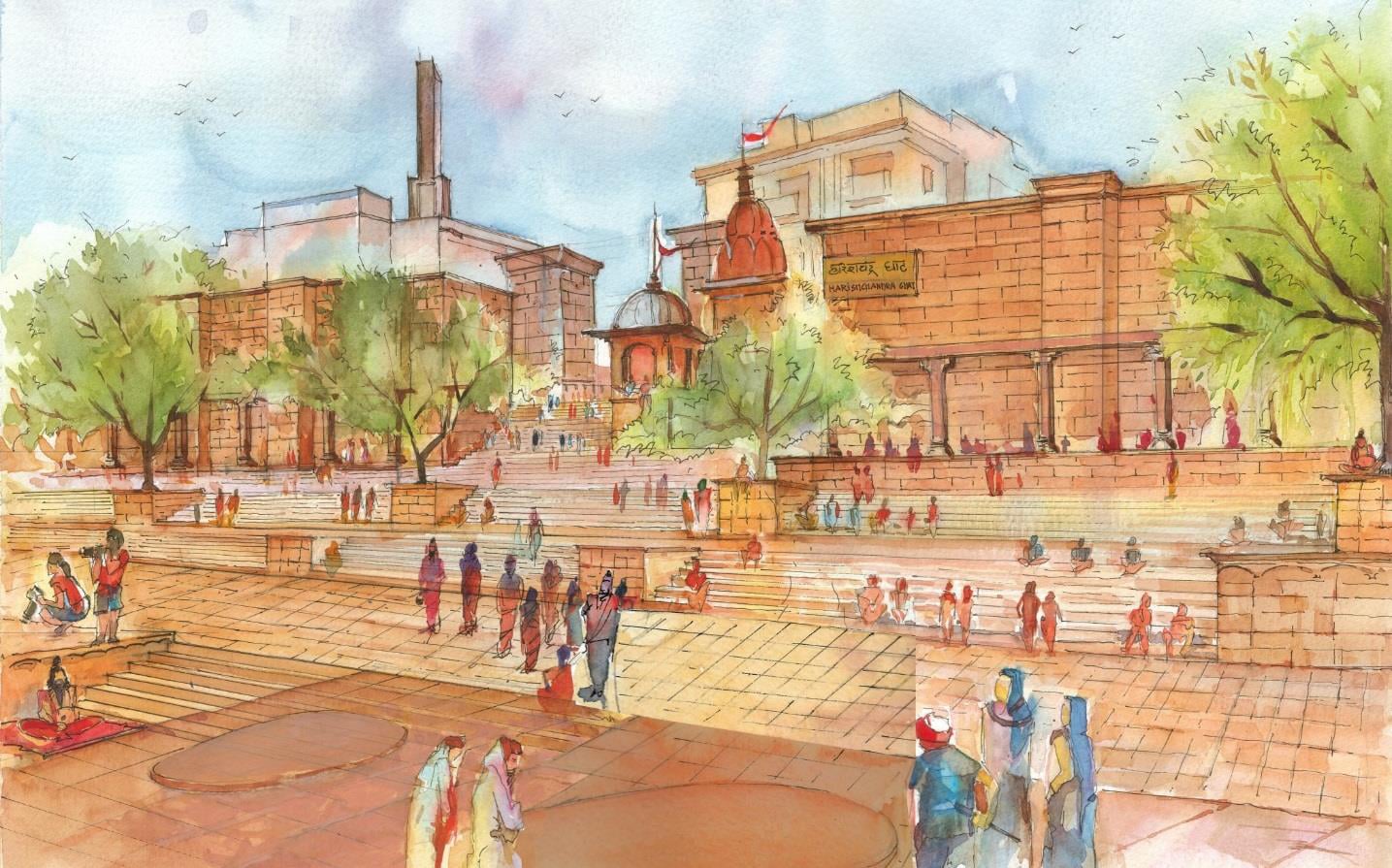
The multiple layers of unchecked and haphazard development that have been added to the inherently organic urban fabric of Varanasi in recent decades have left the city critically poised for a precipitous decline. The issues range between unclean spaces, air and water pollution, dilapidation of old built-forms, degradation of infrastructure, haphazard growth leading to an unorganized urban fabric, flooding and neglect leading to destroyed hardscapes at the Ghats, and dismal under-provision of street furniture and amenities for pilgrims and citizens alike. INI Design Studio handled the task of reorganizing and reviving the lost glory of this legendary city through a sensitive assessment and integrative plan that promised the conveyance of traditions into a responsible, progressive and sustainable future.
Non-Polluting Reconnection of the City with the River
Checking the pollution of the River Ganga formed the top-most priority in INI’s design proposal for the make-over of Harishchandra Ghat in particular and its vision statement for the city’s redevelopment at large along with the rest of the Ghats. Responsibly designed Kunds for ritual ablutions and offerings as well as new platforms for ritual performance were included with the building of fresh embankments along the river edge. The embankments were elevated in phased steps to combat seasonal flooding. A policy of discouraging cremations on the banks and disposal of Pooja materials, ashes and sewage in the river has been adopted in the design proposal. The building of new less polluting electric crematoriums that afforded a direct view of the river was coupled with a drive to increase awareness of the advantages of environmentally responsible cremations. Following this up with the creation of continuous river-side promenades having amenities like gardens, seating, consistent lighting, signage, restrooms and eatery-kiosks helped seal a fresh re-connection of the city and its people to their beloved river.
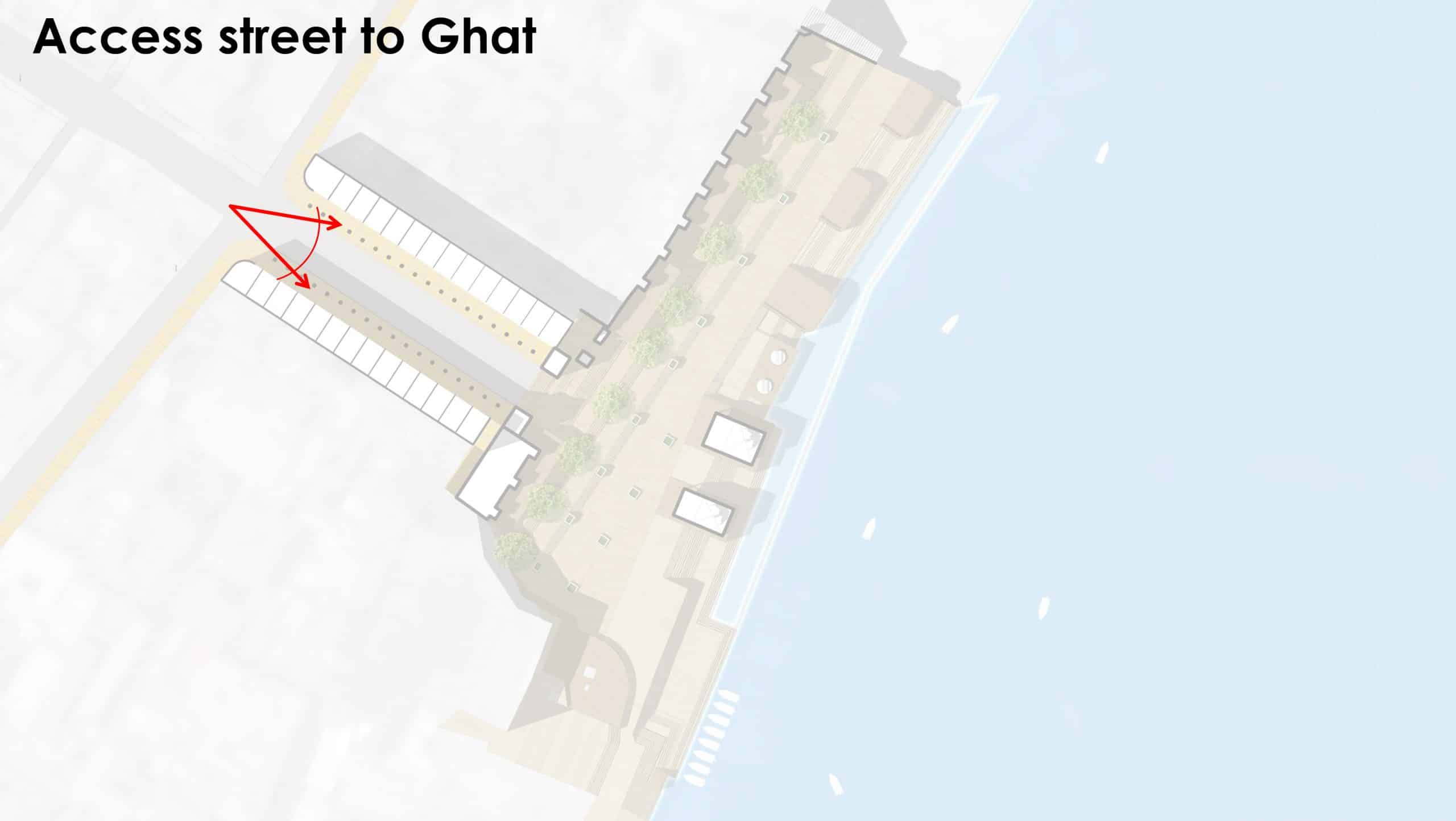
Addressing the Consequences Unorganised Development
The revival plan for the Ghat included cleaning, reorganizing and re-developing of the stretch from the approach road in order to offer a clear, wide access to and re-establish the visual connection with the river. This meant doing away with unplanned obstructions like haphazard bill-boards and wiring, refurbishing establishments located along the road and relaying of strong and sustainable street infrastructure.
A Renewed Platform for Translating Traditions into the Future
The design proposal for the revival of Harishchandra Ghat along with the densely laid out historic Varanasi city and its holy river edge was sensitively approached by studying multiple cases from different parts of the country and the world. An attitude for progressive development tempered by a respect for age-old reverently practiced traditions helped to formulate a plan which didn’t just beautify and clean, but also ensured the sustainability of the city along with its bustling life and unique spiritual status far into the future.
"Designing Sustainable Solutions for the Passage of Traditions"


